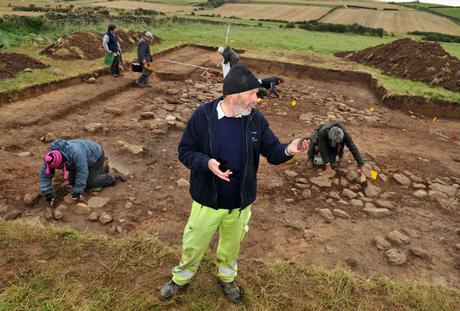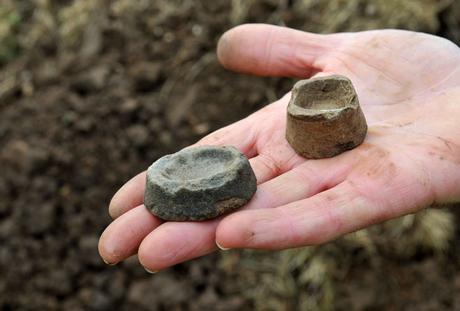Mike Morgan
Source - http://www.gazettelive.co.uk/news/teesside-news/2012/09/14/exclusive-amazing-photos-and-video-of-roman-villa-found-in-loftus-84229-31833646/#ixzz26SdwINqB

Archaeological dig near Upton Hilll, Loftus
A major Roman villa found at the site of the world-famous Saxon Princess excavations near Loftus was today described by archaeologists as “of national importance”.
The “very rare” site, dating back to around 370AD, belonged to an important Romano-British chieftain.
Two rooms have already been excavated by Redcar-based archaeologist Steve Sherlock - the man who discovered the “priceless” Saxon Princess jewels and artefacts, now displayed at Kirkleatham Museum at Redcar.
But he says there are more rooms to uncover - perhaps as many as 20.
What has been found is a large paved area with a room 10m x 6m and a second smaller room to the east with a paved area leading from the other room.

Huntcliff ware pottery and other artefacts have been discovered which suggest the villa is more than 16 centuries old.
Steve, 58, of Redcar, said: “This villa, part of an agricultural estate, is of national importance.
“It’s very rare in the North of England and there are have only been about four ever found in the Teesside region.
“One was found a few years ago at Ingleby Barwick.
“But this one is a very high status building which would have housed someone of high importance - a Romano British chieftain and his family, retinue and slaves.”
Incredibly, the villa is only about 100m to the south of the world class Saxon Princess bed burial discovery of 2007.

Loftus Town Mayor Eric Jackson said: “I’m thrilled to hear of yet another historic find at Street House.
“This Roman discovery follows the Anglo-Saxon Princess burial, making this area the jewel in the crown of archaeology in the region."
Steve and his team of volunteers are back filling the dig on the elevated, rural site this weekend, closing it down for the winter until work resumes next year.
But the public can visit this Sunday to have a last look for themselves.
He said: “There are at least two buildings. We also know jet was made on this site - it’s a very important site for achaeologists to study.
“No jewellery is on site and we have not yet found any mosaics. Villas in the Tees Valley tend not to have mosaics.”
Steve says the site has been occupied since Neolithic times, through the Bronze Age, Iron Age, Roman and the Anglo Saxon periods, before what we know today as Loftus ever existed.
He said: “They picked this site as it was on fertile land, near the sea for transport and fish for food and there was a Roman road nearby.
The excavations are undertaken with the support and interest of the landowners Alan Bothroyd, at Upton Farm, and Tony Garbutt, at Street House Farm.
They are supported by Redcar & Cleveland Council and are carried out by members of Teesside Archaeological Society and local volunteers.
Excavations have taken place in the area on other digs since 2004, initially designed to examine evidence for Iron Age (300BC-100AD) activity.
Steve’s investigations since 2004 have found an Iron Age settlement of 16 buildings with evidence for salt working around from 50BC-100AD.
VIDEO = http://www.gazettelive.co.uk/multimedia/news/local-news/2012/09/14/roman-villa-found-near-loftus-84229-31833881/